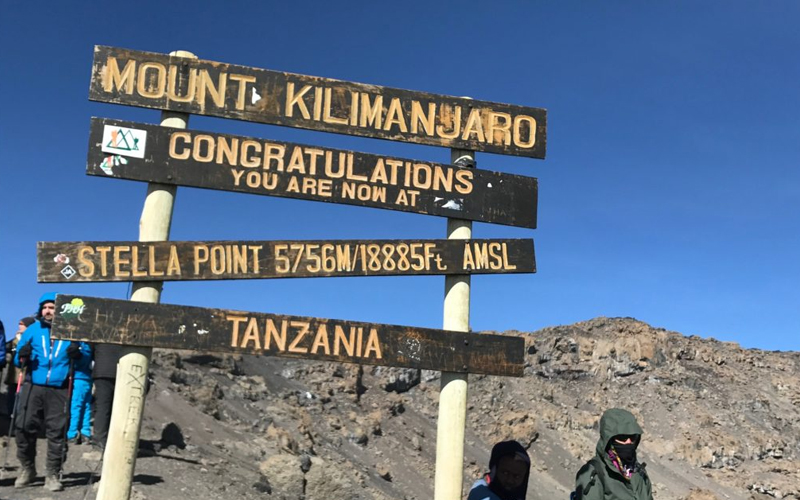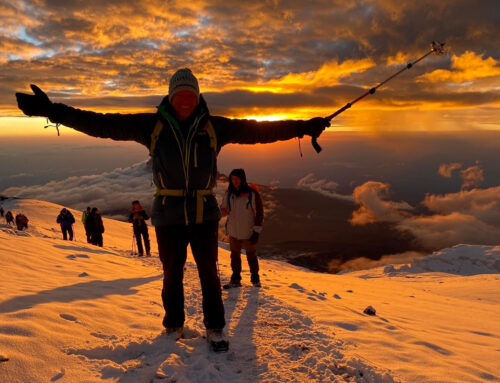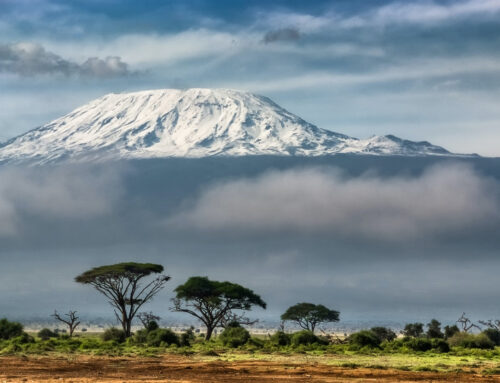Celebrating New Year’s Eve atop Mount Kilimanjaro combines the thrill of adventure with the magic of ushering in a new year from Africa’s highest peak. This unique experience attracts hikers from around the world, all converging to reach the summit, Uhuru Peak, as the first sun of the new year rises. Here’s an in-depth look at planning and experiencing a New Year’s Eve summit on Kilimanjaro, ensuring it’s an unforgettable journey.
New Year’s Eve Summit in Kilimanjaro
Understanding the Climb
- The Significance of Uhuru Peak: At 5,895 meters (19,341 feet), Uhuru Peak on Mount Kilimanjaro is the highest point in Africa. Climbing Kilimanjaro is a feat that presents physical, emotional, and mental challenges, yet offers immense rewards with panoramic views of the African landscape and a profound sense of accomplishment.
- Choosing the Right Route: Kilimanjaro offers several routes to the summit, but for a New Year’s Eve ascent, the Machame, Lemosho, and Marangu routes are popular choices. These routes offer varied scenery and adequate acclimatization opportunities, crucial for a successful summit.
Preparing for the Climb
- Physical Preparation: Climbing Kilimanjaro requires good physical fitness. Begin training at least six months in advance, focusing on cardiovascular endurance, strength training, and hiking. Regularly hiking long distances, especially on varied terrain and inclines, can significantly improve your stamina and condition your body.
- Mental Preparation: The mental challenge of climbing Kilimanjaro should not be underestimated. Prepare yourself mentally by setting realistic expectations, understanding the challenges ahead, and staying positive and resilient. Meditation and visualization techniques can also be beneficial.
- Packing Essentials: Proper gear is critical for the harsh conditions you might face on Kilimanjaro. Essential items include thermal layers, waterproof outerwear, quality hiking boots, a sleeping bag suitable for extreme cold, headgear, gloves, and a headlamp for the nighttime summit push. Don’t forget sun protection and a first-aid kit.
Timing and Itinerary
- Optimal Timing
To summit on New Year’s Eve, you need to plan your route and start date meticulously. Typically, a 7-day itinerary is optimal, allowing for proper acclimatization and a midnight arrival at the summit. This means starting your climb around December 26.
- Sample Itinerary
- Day 1: Arrival at Kilimanjaro International Airport, and transfer to your hotel.
- Day 2: Begin trek at Machame Gate to Machame Camp.
- Day 3: Machame Camp to Shira Camp.
- Day 4: Shira Camp to Lava Tower, then descend to Barranco Camp.
- Day 5: Barranco Camp to Karanga Camp.
- Day 6: Karanga Camp to Barafu Camp, prepare for summit night.
- Day 7: Summit push to Uhuru Peak around midnight, celebrate New Year’s on the summit, and descend to Mweka Camp.
- Day 8: Descend to Mweka Gate, and transfer back to the hotel.
The Summit Experience
- The Final Push: The final ascent starts around 11 PM, allowing climbers to reach the summit by sunrise. This part of the climb is both mentally and physically demanding due to the altitude, cold, and darkness.
- Celebrating New Year’s Eve: Reaching the summit at midnight is a surreal experience. Climbers often bring small bottles of champagne or sparkling juice to celebrate, sharing this momentous occasion with fellow hikers against the backdrop of the vast African sky.
Safety and Health Considerations
- Altitude Sickness: Altitude sickness is a real concern in Kilimanjaro. Familiarize yourself with the symptoms and take preventive measures such as proper acclimatization and staying hydrated. Diamox is commonly prescribed to mitigate symptoms, but consult with a healthcare provider before use.
- Emergency Procedures: Ensure your tour operator has emergency protocols in place, including evacuation procedures and first-aid trained guides. Check that your travel insurance covers high-altitude trekking and possible medical evacuation.
After the Climb
- Recovery: After descending from the summit, allow a day or two for recovery before continuing your travels in Tanzania or returning home. This is essential to let your body recuperate and reduce the risk of post-climb ailments.
- Extending Your Stay: Consider extending your stay in Tanzania to explore other attractions. Safari trips to the Serengeti, relaxing on the beaches of Zanzibar, or visiting the historic sites of Stone Town are excellent ways to complete your Tanzanian adventure.
Summiting Mount Kilimanjaro on New Year’s Eve is an extraordinary experience that combines the thrill of adventure with the celebration of a new beginning. It requires careful preparation, respect for the mountain’s challenges, and a spirit of adventure. With the right preparation and mindset, this can be a transformative journey, offering not just a view from Africa’s highest peak but a fresh perspective on life itself.
FAQs
1. What is the success rate for New Year’s Eve summits on Kilimanjaro?
- The success rate varies by route and preparation but typically ranges from 60% to 80%. Proper acclimatization and physical preparation significantly increase the chances of a successful summit.
2. How cold can it get during the New Year’s Eve summit?
- Temperatures at the summit around midnight can drop below -20°C (-4°F), not accounting for windchill. It’s essential to have appropriate gear to handle these extreme conditions.
3. Are there special celebrations at the summit for New Year’s Eve?
- Yes, climbers often bring small celebratory items like flags, banners, or even costumes, in addition to champagne or sparkling juice for a midnight toast.
4. Can beginners climb Kilimanjaro for a New Year’s Eve summit?
- While Kilimanjaro is considered a “non-technical” climb (not requiring ropes or climbing equipment), it’s still challenging. Beginners can complete it successfully with adequate preparation, both physical and mental, and choosing an itinerary that allows for complete acclimatization.
For answers to your questions and detailed insights, please visit the following pages:
- FAQs
- Kilimanjaro Climbing
- Ruaha National Park
- Selous Game Reserve
- Serengeti National Park
- Tanzania Safari Packages
Explore these pages to plan your perfect adventure!






Leave A Comment